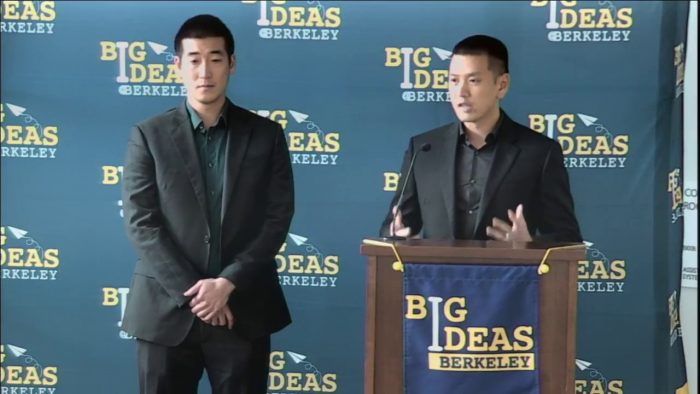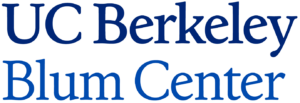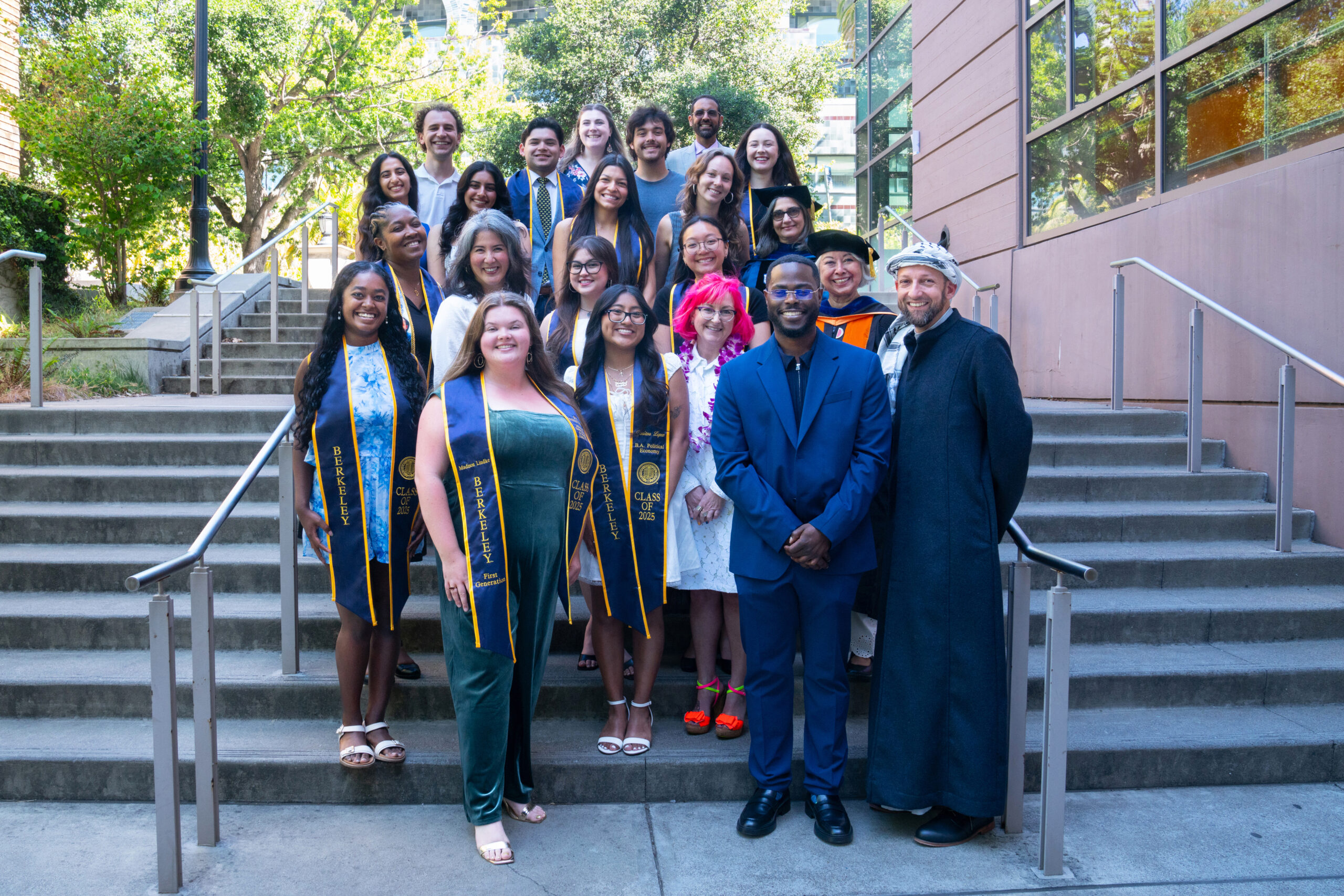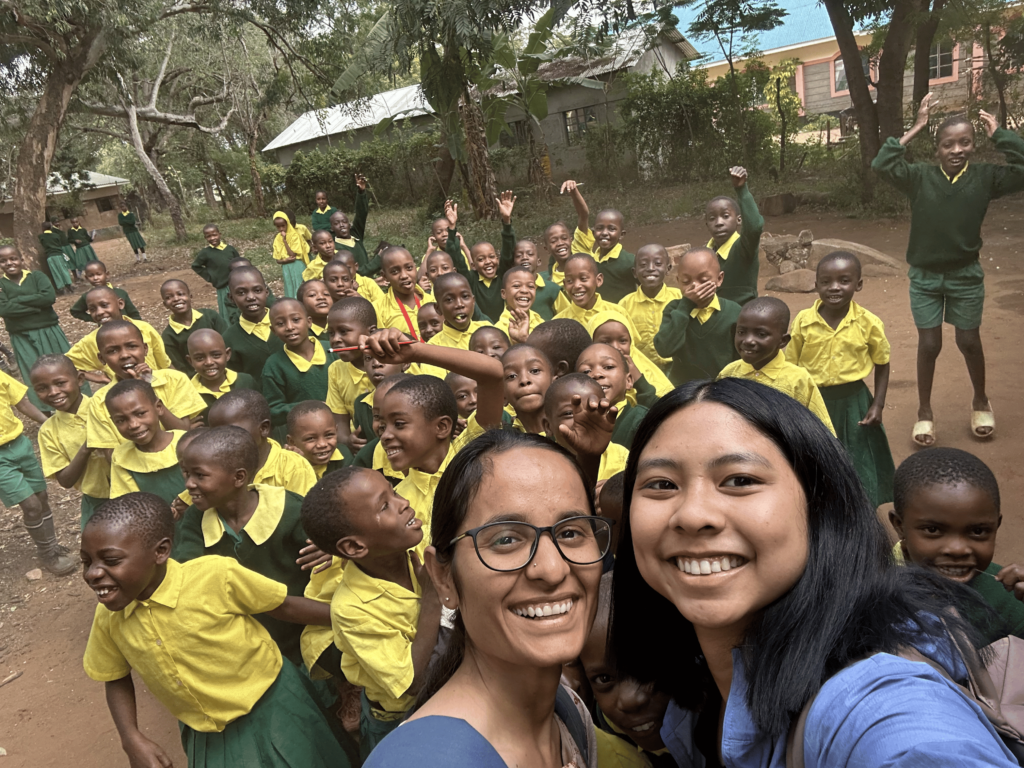By Veena Narashiman
 An injured soldier is rushed to a field hospital and is bleeding out. A surgeon needs to give the soldier meds to speed up her clotting. But too much or too little will kill her. The doctors rely on lab equipment to determine dosage; however, the large machine was never designed for field use. The surgeon is caught between an educated guess and blind dosing, putting the soldier’s life at risk.
An injured soldier is rushed to a field hospital and is bleeding out. A surgeon needs to give the soldier meds to speed up her clotting. But too much or too little will kill her. The doctors rely on lab equipment to determine dosage; however, the large machine was never designed for field use. The surgeon is caught between an educated guess and blind dosing, putting the soldier’s life at risk.
This was the story that Jeffrey Lu and Johnathon Li heard from a U.S. Air Force vascular trauma surgeon. The two old friends, UC Davis graduate students in biomedical engineering and animal science, realized they had possibly stumbled upon a market gap for a mobile blood clotting monitoring device.
After conversations with UC Davis doctors, their hunch was confirmed. Not only did they learn that traumatic injuries which disrupt blood clotting are the second leading cause of preventable death in developed countries, they discovered that mobile blood clotting solution could had worldwide application—from the frontlines of the war in Syria to rural areas in Sub-Saharan Africa.
Lu and Li also learned that with current technologies, an injured soldier may not receive treatment for up to 24 hours; and in civilian hospitals, patient treatment can be delayed three hours. The technicians and surgeons they interviewed said they wanted a device they could use in the operating room, circumventing the time involved in sending samples to the lab. Surgeons especially complained that when they got back lab results, the information was often obsolete because the patient’s condition had changed from further bleeding out.
“Current [blood-clot testing] devices are like using microwaves to cook,” said Lu. “It works if you don’t move it, and occasionally they come out great, but more often than not you’re just going to be disappointed.”
Or as Dr. Joseph M. Galante, the trauma medical director at UC Davis Medical Center, put it: “Undiagnosed coagulopathy [bleeding disorder] in trauma patients is associated with greater transfusion requirements, longer intensive care unit and hospital stays, and greater incidence of multi-organ failure or death. Patients with uncorrected coagulopathy are eight times more likely to die within the first 24 hours following trauma.”
Lu and Li spent part of their graduate school years working on the project they dubbed Innovis Medical. The partners began to understand their competition, their possible business model, and the people they needed to cultivate to make the best possible medical device.
In October 2017, Lu and Li turned to the Blum Center’s Big Ideas student innovation contest, to further shape and fund their idea. Big Ideas is open to undergraduate and graduate students at all 10 UC campuses and had a contest category that fit their invention: Hardware for Good, made possible through the generous support of the Autodesk Foundation. The contest put them through a nine-month project incubation, mentoring, and application process that Lu and Li saw was crucial to their company’s development.
“In entrepreneurship, you’re not selling your idea, you’re selling your network,” said Li. “Big Ideas participants enter Berkeley’s well-oiled machine, and their biggest advantage is their network.”
By meeting new people and potential advisors, the Innovis Medical founders realized they needed to pivot their strategy. Lu and Li decided to prioritize the civilian market instead of battlefield situations and use more layman language to describe their product.
At the 2018 Big Ideas Pitch Day before winning a first place prize, Lu went into the specificities of the device: “Our solution is a portable medical device that uses a solid state sensor to track an electrical property of blood known as bioimpedance as it clots. Our device produces graphs and data similar to the current state of the art device, but without the bulky sensor mechanical components. The sensor itself is a disposable cartridge with no mess to clean up, no chemicals to work with. With a solution designed specifically to mobility, blood clot tests are no longer restricted to laboratories but can be used in a battlefield, operating room and even the comfort of your own home.”
At the pitch, Lu further argued that tests during surgery, which take 30 minutes to receive back from the lab, could be performed in the operating room within four to 10 minutes. Post-surgery patients who previously needed to make a trip to the hospital every few weeks to have their blood thinner dosage checked, could run the tests themselves at home—much like diabetic patients who are able to track their own insulin levels.
In January 2018, Lu and Li joined UC Davis’ Inventopia, a makerspace for startups, where they were able to witness the production of their device’s sensor. The next month, they attended Meet the Experts Night at UC Berkeley, whey they were connected to Rhonda Shrader, director of the Berkeley-Haas Entrepreneurship Program, who referred them to contacts throughout the Bay Area.
Innovis Medical estimates significant reach and cost savings. Its market could include an annual 672,000 U.S. military trauma cases, 15 million U.S. civilian cardiac surgeries, and 7 million disaster-related surgeries in the developing world. As for costs savings, Innovis estimates the 15 million annual civilian patients of cardiac surgery could save up to $7,000 per operation. In developing countries, Innovis believes its device could be crucial in setting where reliable energy and technicians may not be available.
Lu and Li recently expanded their business plans through the UC Berkeley Innovation Corps course and were accepted to the national I-Corps incubator for scaling university-based innovations run by the National Science Foundation.
The founders also have launched a collaboration with UC Davis Medical, where civilian and military surgeons are using the Innovis device to directly test human blood from cardiac patients alongside status quo devices. Lu said sensors are being deployed for clinical tests with the aim to iterate the device to address as wide a range of patients and blood types as possible. He and Li hope to get FDA approval by 2021.




